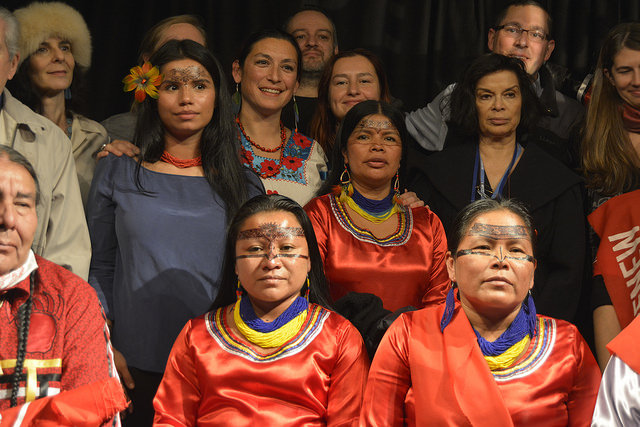In 2007, scholars worldwide came together to find a way to bring Indigenous Peoples together. During their discussion, they called their works Native American and Indigenous Studies on behalf of the natives around the globe. With many terms created since the colonial era, it’s difficult to distinguish which one is best to use to avoid political issues.
According to the Director of Native American and Indigenous Studies at the University of Texas at Austin, Luis Carcamo-Huechante, Native American and American Indian are names that are appropriated and embraced by tribes in North America. While these names have a long history of conflict, rejection, and stripping of identification, they are now used for recognition.
When referring to Indigenous Peoples, Huechante said this term extends to all regional natives worldwide, including American Indians. What brings them together are their original homelands and colonized history. To help clarify these terms, in 2007, the UN created a guideline to describe those who qualify as Indigenous:
- Self-identification as Indigenous
- Acceptance as Individuals by the indigenous members
- Historical continuity with a pre-colonial and/or pre-settler setting
- Strong link to territories and surrounding natural resources
- Distinct social, economic or political systems
- Distinct beliefs, culture, and language
- A non-dominant groups of society
- Practice, reproduce, and maintain ancestral culture, environments and systems as distinctive peoples and communities
(Remember that this is a guideline and not an official standard.)
In 1977, the World Council of Indigenous People made the concept of self-determination an international legal practice. When referring to one of 370 million Indigenous individuals across the globe from the 70 countries worldwide home to Indigenous Peoples, the best practice is to respect their self-identification, culture, language, and history.
It’s polite to ask in a tactful manner when you don’t know. There are also several tips offered by companies for workplace interactions. Grammatically, it’s respectable to use ‘Indigenous Peoples’ because it’s highlighting the distinctiveness for all groups. It’s better to refer back to their community names like Cherokee, Navajo, or Abya Yala. Some names that are used in different regions around the world are:
United States:
- Native Americans, American Indians
Canada:
- Aboriginals, First Nations
Latin America:
- Pueblos Indígenas, Indigenous Peoples
Amazonian Regions (Brazil, Peru):
- Pueblo Nativos, Indigenous Peoples
As time progresses, countries are finding new ways to honor and respect those who originally inhabited a region.
In the United States, Alaska, Hawaii, South Dakota, and a few other states are hosting celebrations of Indigenous Peoples Day in place of Columbus Day as an apology for colonization and to make amends. Meanwhile, other countries will celebrate the day European and Spanish colonists met the Native Americans and Indigenous Peoples in North and South America.
Indigenous Peoples speak unique languages, possess diverse cultural customs, and understand sustainable natural resource management like no other. Take this Indigenous Peoples Day to commemorate their rich culture and history, which are deeply intertwined with ancestral lands.
Sharon Schweitzer and Esther Sanchez co-wrote this post. Sharon Schweitzer, J.D., is an award-winning entrepreneur, cross-cultural trainer, and the founder of Access to Culture. In addition to her accreditation in intercultural management from the HOFSTEDE Centre, she serves as a Chinese Ceremonial Dining Etiquette Specialist in the documentary series Confucius was a Foodie, on Nat Geo People. She is regularly quoted by BBC Capital, Investor’s Business Daily, and Fortune. Her Amazon #1 Best Selling book in International Business, Access to Asia: Your Multicultural Business Guide, (3rd printing), was named to Kirkus Reviews’ Best Books of 2015. She’s a winner of the British Airways International Trade Award at the 2016 Greater Austin Business Awards.
Esther Sanchez is a Fall 2017 Cross-Cultural Communication intern with Access to Culture. She is currently attending the University of Texas at Austin as a Journalism major and working to earn a minor in Middle Eastern Studies and a certificate in Computer Science. She plans to use these skills to tell stories through virtual reality from around the world. You can connect with her on LinkedIn or Facebook, Instagram or Twitter.


Leave A Comment